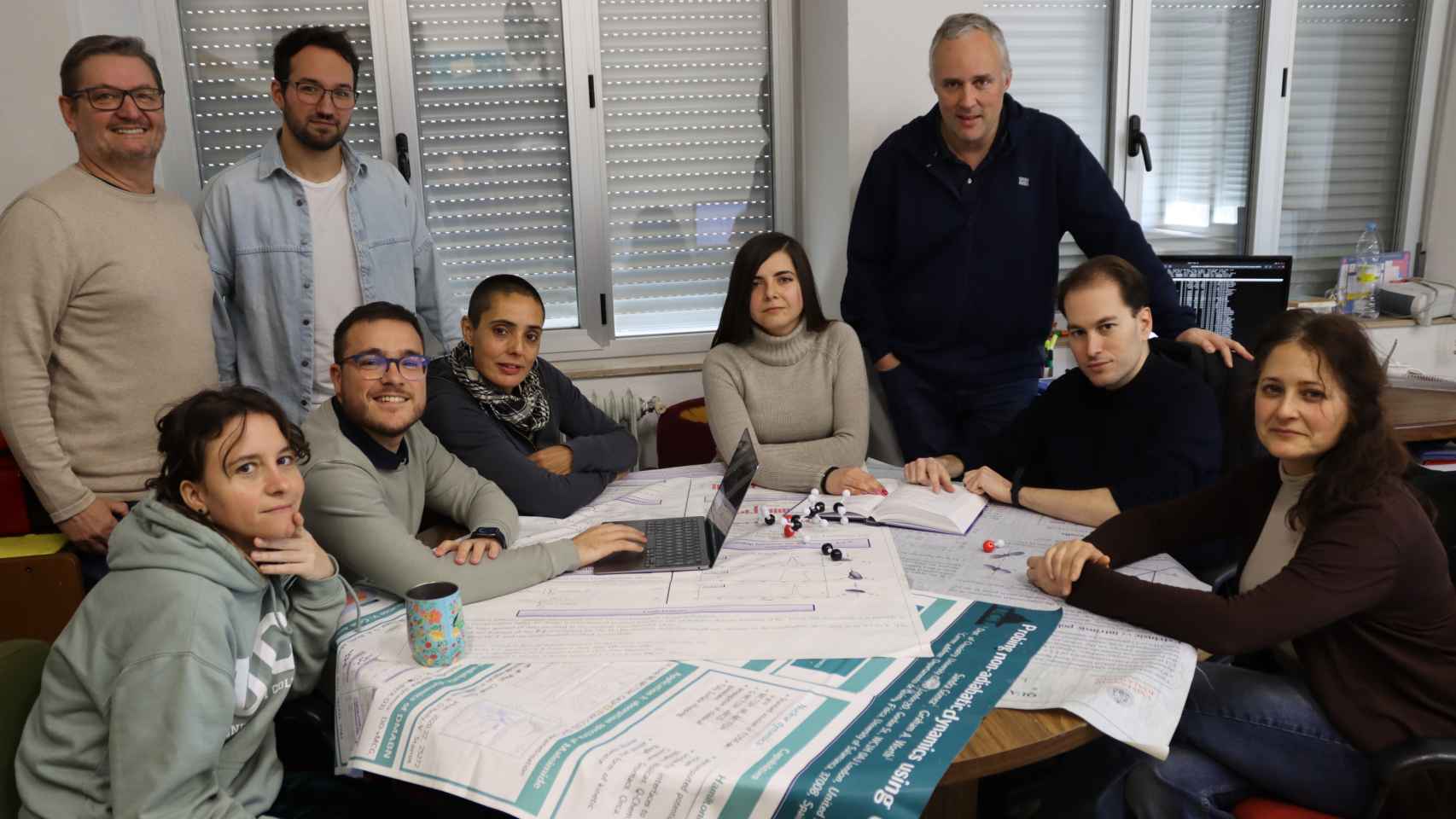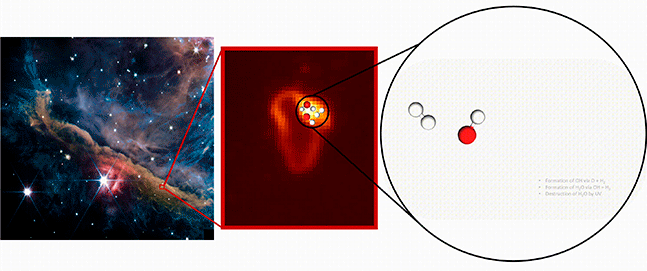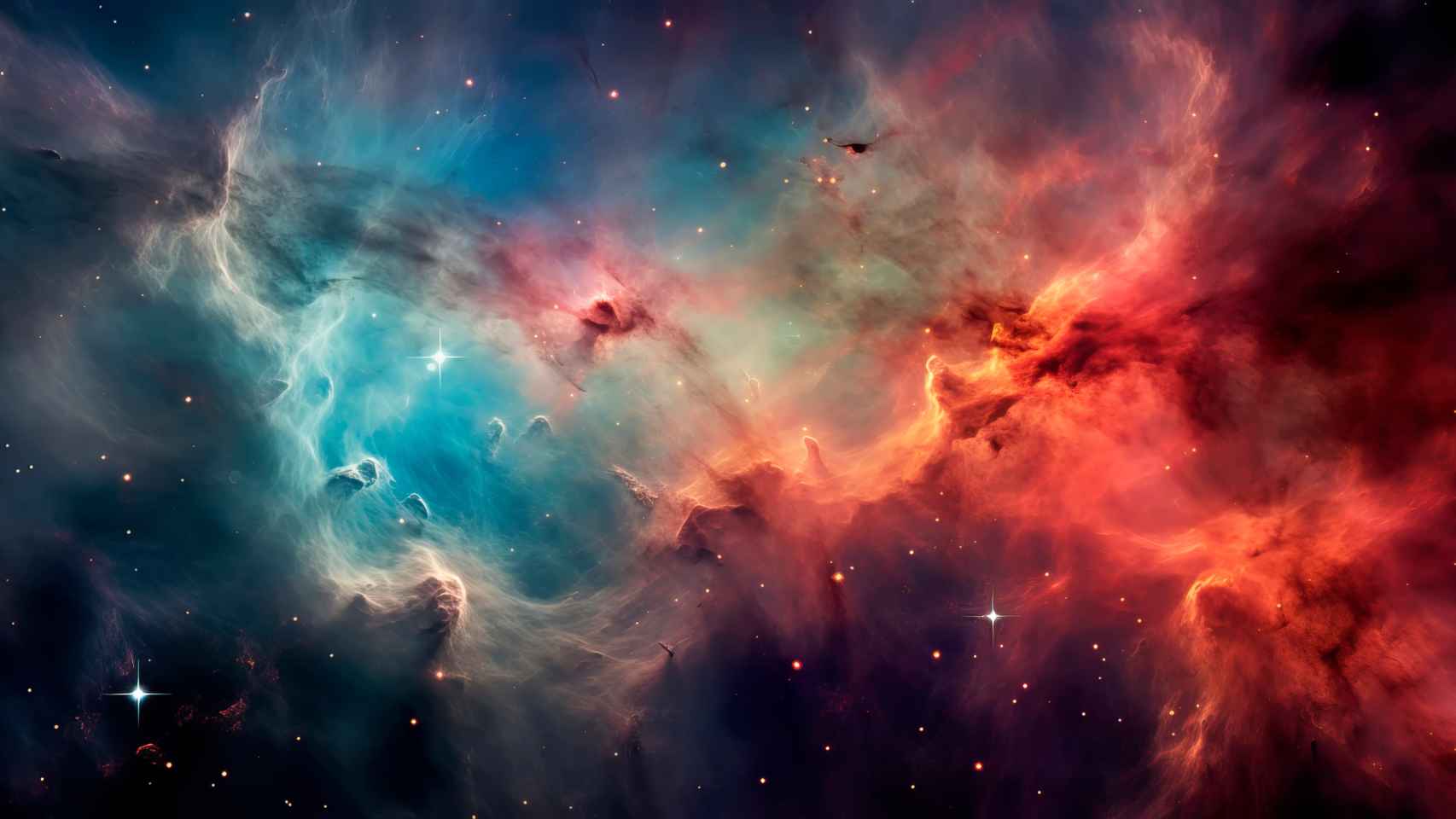USAL in a study of the monthly formation and destruction of water in the Earth’s oceans in space.

Water is an essential ingredient for the emergence of life as we know it. On Earth, most of the water in our oceans was formed long before the birth of the solar system, in the cold regions of interstellar space (-250°C). However, some of this water may have been broken down and re-formed at higher temperatures (100–500°C) when the Solar System was still a disk of gas and dust orbiting the young, nascent Sun.
The University of Salamanca, through its GIR for Molecular Dynamics, is part of an international team that has shed light on the disruption and formation of large amounts of water in the planetary formation disk located at the center of the Orion Nebula. Discovery presented in the program PDRs4All1 Early Edition Science (ERS) and was made possible by an original interdisciplinary approach that combines observations from the James Webb Space Telescope (JWST) and quantum dynamic calculations.
Nature Astronomy just published a study entitled “OH as a study of the warm water cycle in planet-forming disks” in which, to understand this mysterious water recycling, “astronomers pointed the JWST space telescope at d203-506, a planetary formation.” A disk located in the Orion Nebula, the cradle of planetary systems, which is believed to be similar to the primitive Solar System,” explains Comunicación USAL GIR of Molecular Dynamics. Intense ultraviolet radiation produced by massive stars causes the water in d203-506 to break down and reform, “turning it into a veritable interstellar laboratory.”

Study molecules 1000 light years away
But how can we observe the formation and destruction of molecules more than 1000 light years away? The collaboration of astrophysicists from Paris, Leiden and Madrid with chemistry and quantum dynamics specialists from Leiden, Madrid and the GIR for Molecular Dynamics of the University of Salamanca (with the outstanding participation of postdoctoral researcher Angela Veselinova) was the key to overcoming this challenge.
When water (H2O) is destroyed by ultraviolet light, “a hydroxyl radical molecule (OH) is released in a dizzying spinning motion, followed by the emission of radiation that travels into the JWST,” they explain. “Highly excited infrared OH rotation lines indicate destruction of H2O by FUV radiation.”
A research consortium coordinated by the University of Paris-Saclay estimates that in total, the equivalent of one Earth’s ocean is destroyed every month in the young system d203-506. But this water breakdown does not fully explain the observed spectrum, and this is where the USAL researchers played a fundamental role.
By including the hydroxyl radical, produced by the reaction between atomic oxygen and molecular hydrogen, in the simulation, quantum dynamics calculations carried out in Salamanca and Madrid made it possible to fully explain the spectrum. This reaction results in the formation of hydroxyl in excited vibrational states, “which have never been observed in space before,” they emphasize. Thus, the hydroxyl produced through this pathway will lead to the formation of new water molecules.
Research results show that at high temperatures and in the presence of radiation, water is effectively destroyed and reformed through gas-phase reactions. According to USAL scientists, “the cycle has closed. Some of the water that makes up our oceans may have undergone a similar cycle,” they conclude.

Orion Nebula image
USAL
